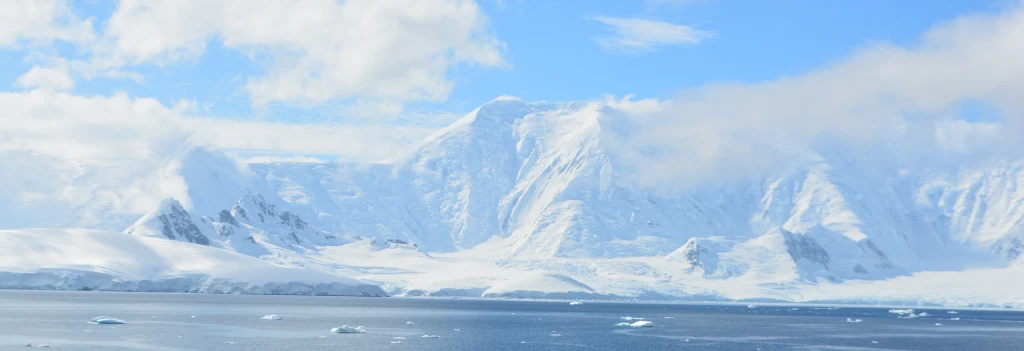
There may not be many wild places left on Earth, but Antarctica certainly is one. Winters are extremely hostile to life – certainly to human life – with extremely cold temperatures and months without sunlight. Even summers are cold, and the weather is dangerously moody. The sheer size of this ice-covered continent is breathtaking. It is much larger than Europe 14,200,000 km2) and essentially unpopulated except for a few researchers in a couple of stations and some tourists who reach the Antarctic peninsula on cruise ships during the few weeks this is possible to cross the treacherous Drake passage between Patagonia and Antarctica each summer.
Antarctica also represents an interesting political experiment: it doesn’t belong to anyone, but the many countries that are members of the Antarctic treaty– a set of agreed on rules and codes of conduct aimed at protecting the continent from new exploitation. But scientific research is both welcome and needed. It may not be the easiest choice for a research area, but we know so little about Antarctica that scientists working there are incredibly important. Despite its remoteness Antarctica is influenced by human activities and has been identified as one of the key places for potential tipping points in climate change: if the Antarctic ice shield, which holds 70% of the world’s freshwater melted completely, sea levels would rise by about 60 meters.
This is the backdrop for an exciting project funded by the US National Science Foundation (NSF). One of the big questions is: what is underneath the ice? The source of science fiction fantasies (such as Austral by Paul McAuley), this is actually a very relevant question and potentially provides us with a glimpse of the history of the Antarctic continent. In 2016, a team of scientists set out to explore just this. Following up on the discovery of a freshwater lake hidden under ice they proposed to drill a hole in the ice to get samples of the lake and its sediments. The team formed under the acronym SALSA (for Subglacial Antarctic Lakes Scientific Access). Their project would have been daring almost anywhere, but pulling this off in Antarctica required years of meticulous planning and training. After all, Antarctica is difficult to get to, hard to work in, and if something happens to you, hard to get away from.
And what would be more exciting than having a movie made about the drilling experiment in Antarctica? The perfect person for this was Kathy Kasic, a biologist turned filmmaker from California State University in Sacramento, with many years of experience in making nature documentaries with some of the top stars in the field. Her effort to document what happened during the campaign would immortalize the research project. She used a modified version of cinéma verité to document what went on in the camp and during the actual drilling. She was the fly on the wall, as everybody else worked on the drilling project. What she produced is a fascinating blend of art and science. Her feature length movie “The lake at the bottom of the world” (click for trailer; view on Amazon, Apple TV) not only tells the fascinating story of a unique expedition in sometimes very personal and emotional pictures, but also lets us see the stunning beauty of the icy continent.
We also catch a few glimpses of the dangers that loom and had the potential to derail the research efforts at any time. Strong winds made the tents used as sleeping quarters for the team look particularly puny and inadequate. The movie, however, goes well beyond just documenting this one campaign. It shows science in the making, as teamwork that only works if everyone is willing to cooperate across disciplinary boundaries, and to pitch in for mutual success. It shows scientists as real people, with emotions and flaws, but also shows their unbridled happiness and excitement for the research they conduct together. And one realizes that the team includes many more people than the scientists: the many technicians without whom the scientists would be stranded, but who rarely have much visibility and often get little recognition. The secret stars of the movie are the ice drillers, lead by Dennis Duling, who were among the very few people on the planet to make this project a success or even possible.
In that spirit of collaboration and transdisciplinary curiosity, Kasic’s visit to the University of Oklahoma in early March was sponsored by three different units: the Environmental Studies Program, the Department of Film and Media Studies, and the Department of Biology. Students and faculty of all three units had time and opportunity to interact with the filmmaker and ask her about her movie and the adventure of working in Antarctica.
If anything, the movie and the stories told in it, show how research can contribute to our understanding of science as process, maybe especially under rough circumstances, and how it is done by real humans.

Ingo Schlupp (ORCID: https://orcid.org/0000-0002-2460-5667) is a Professor of Biology at the University of Oklahoma.



